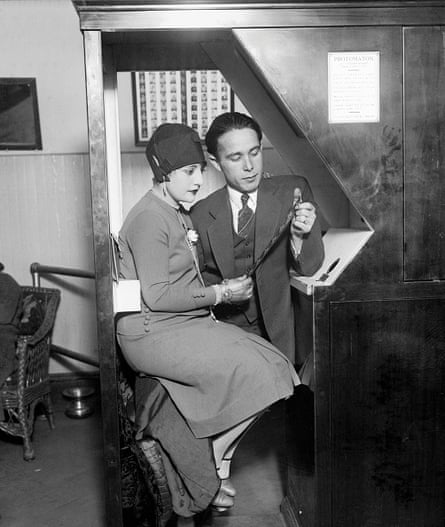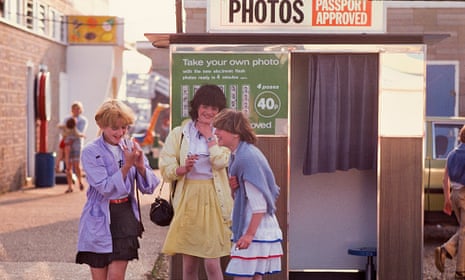Long before Instagram and iPhones, Snapchat and Kim Kardashian, there was a Siberian immigrant in New York City who was about to get very rich. Fascinated by his Brownie box camera, the Kodak device that brought photography to the masses, Anatol Josephowitz arrived in Manhattan with plans to go further, foreshadowing the selfie age a good 80 years before its time.
In 1925, Josepho (he dropped the -witz) unveiled his Photomaton, a small automatic studio with a stool that would return a strip of eight postage-stamp portraits in exchange for 25 cents. “Broadway’s greatest quarter-snatcher” was a sensation, making Josepho famous. In 1927, he sold the US rights to his machines for $1m.

Josepho had invented the first working photo booth, which then mushroomed in shopping centres, post offices and pharmacies. And when they weren’t being occupied by lovebirds and best-friends-forever – or inspiring Andy Warhol – their spinning stools offered an unromantic service for passport applicants.
But now the Home Office has confirmed that online applicants may upload photos taken on mobile phones. Does this mean that it’s curtains for the photo booth? Photo-Me, the country’s biggest booth firm (it supplies the Post Office and Boots, among others) could not develop answers in time, but there are signs elsewhere that booths are shifting into a new age.
At Photobooths, a West Midlands firm that began with a single rental booth in 2011, demand has grown so much that it now makes its own booths for the industry. It has sold more than 3,000 booths for use at weddings and other events. “Birthdays or barmitzvahs are also popular and we’ve even done a few divorce parties,” says Laura Coles, the firm’s marketing manager.
The company’s new Magic Mirror Booths, which launched last year, cost £5,000 and are made to look like antique full-length mirrors. The glass doubles as a giant touchscreen with a camera behind it. “Quite early on we made the decision to take the stools out of our early booths because, at weddings, people were just cramming in there and not sitting down,” Coles adds.
Similar technology is increasingly being deployed in “smart” changing rooms by clothing retailers; selfie mirrors allow shoppers to share images of potential new outfits, advertising themselves and the store. Restaurants have added booths as a side dish for image-conscious diners. “Customers like a memento that isn’t just on their phone,” says Scott Collins, co-founder of the MEATLiquor chain. His restaurants now include booths supplied by Snaparazzi, which supplies retro machines as well as 1960s originals.
For the first time, the Photomaton provided a place where people could relax unselfconsciously, beyond the expensive strictures of the portrait studios of the era. At Photobooths, Coles says not much has changed. “I think the growth of the selfie has influenced the industry but I think booths are different,” she adds. “They give us an excuse to take lots of pictures of ourselves without feeling vain. They feed the ego in a positive, funny way.”

Comments (…)
Sign in or create your Guardian account to join the discussion